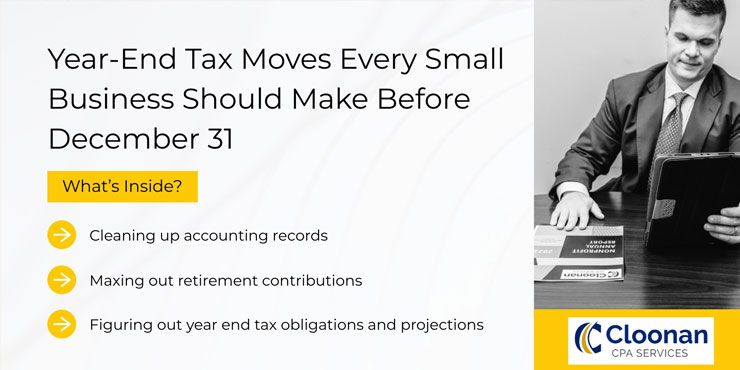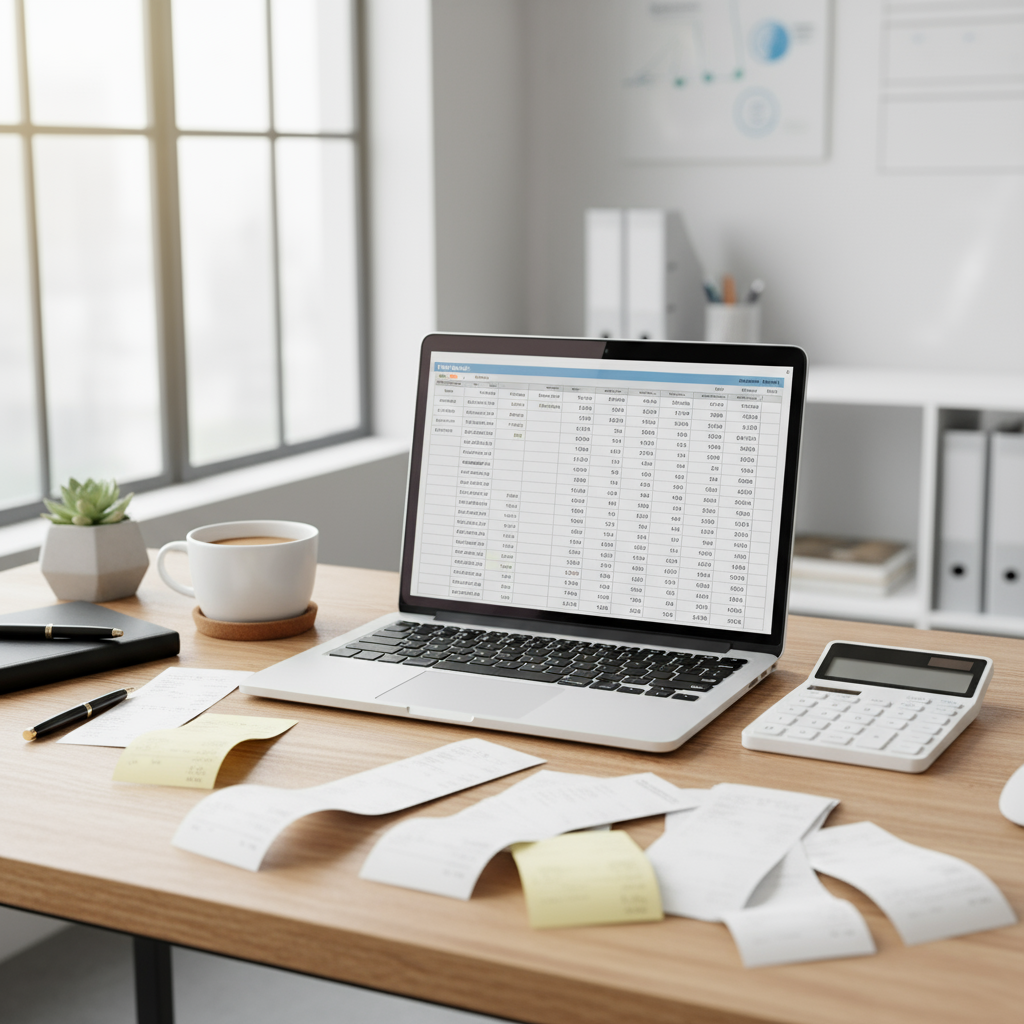Year-End Tax Moves Every Small Business Should Make Before December 31, 2025

Smart, simple steps to lower your tax bill and start the new year strong.
The end of the year always sneaks up faster than expected—and for small-business owners, it can mean more than just holiday rushes and year-end reports.
It’s also your last, best window to make moves that shrink your upcoming tax bill.
The good news? Most of the smartest year-end tax strategies are straightforward, fast to implement, and 100% in your control.
Whether you run a coffee shop, contracting business, or growing online brand, here are the practical steps you can take before December 31 to make tax season much smoother (and cheaper).

1. Review Your Books and Close Any Gaps
Think of your bookkeeping as the foundation for every other tax decision. Before you start planning deductions or purchases, make sure your books are accurate and up-to-date.
Reconcile all business bank and credit-card accounts.
Match receipts to expenses so you’re audit-proof.
Verify that any outstanding invoices are recorded properly.
Even a quick cleanup in QuickBooks can make your tax prep faster—and save on accounting fees later.
👉 Pro tip: If your books still feel messy or behind, it’s the perfect time to bring in professional help.
2. Accelerate Purchases to Lock in Deductions
If you plan to invest in equipment, tools, furniture, or software early next year, consider buying before December 31 so the cost becomes deductible this year.
Section 179 deduction: lets you deduct up to $1.22 million (2025 limit) in qualifying business assets.
Bonus depreciation: still allows partial write-offs for certain equipment and vehicles placed in service this year.
Typical examples include laptops, office furniture, or new point-of-sale systems—anything you actively use in your business.
3. Manage Income Timing (If You’re Cash-Basis)
Cash-basis businesses can strategically time income and expenses:
- Delay sending December invoices until January to push income into next year.
- Pre-pay January expenses (like rent, utilities, or insurance) in December to boost deductions.
Just keep things consistent with your normal accounting practices, and don’t over-delay cash flow—you still want to start January strong.
4. Max Out Retirement Contributions
Retirement contributions are one of the simplest ways to reduce taxes and save for your future.
If you’re self-employed or own an LLC or S-Corp:
- Solo 401(k): contribute up to $23,000 ($30,500 if 50+).
- SEP IRA: up to 25% of compensation, capped at $69,000.
- SIMPLE IRA: $16,000 limit ($19,500 if 50+).
You usually have until your tax-filing deadline to contribute, but setting up the plan before December 31 is crucial for most options.

5. Check Payroll and 1099 Compliance
Before closing the books, double-check your payroll and contractor records.
Confirm that every contractor has submitted a Form W-9.
Review payroll tax deposits and make sure filings are current.
Prepare early for 1099-NEC forms (due January 31).
Getting this right now avoids year-end stress—and possible IRS penalties for late or incorrect filings.
6. Evaluate Your Entity and Tax Election
If your business grew substantially this year, your current setup might not be the most tax-efficient anymore.
An S-Corp election can reduce self-employment taxes if you’re profitable.
Multi-owner LLCs or partnerships might benefit from restructuring before next year.
Entity planning is one of the highest-ROI conversations you can have with your CPA heading into a new year.
7. Take Advantage of Charitable & Employee Giving
The holidays are a great time to give back—and doing so wisely can reduce your taxable income.
Deduct cash or goods donated to qualified 501(c)(3) charities.
Document all contributions (keep receipts!).
Be mindful that employee gifts have specific IRS rules: small non-cash items like gift cards or meals are typically deductible, but large cash bonuses are considered wages.
8. Conduct a Quick Year-End Tax Projection
Once your books are mostly finalized, ask your accountant (or DIY using last year’s return) for a quick tax projection.
Seeing your estimated liability in advance gives you time to:
- Make additional purchases or contributions;
- Adjust estimated payments;
- Plan for cash flow in Q1.
At Cloonan CPA Services, we often find business owners who do this save thousands just by spotting issues before they file.
9. Organize Your Tax Documentation Now
Create a digital or physical “Tax 2025” folder and start collecting:
- Bank and credit-card statements
- Payroll summaries
- Loan and interest documents
- Mileage or expense logs
The more organized you are in November and December, the faster (and cheaper) your tax prep will be come spring.

10. Schedule Your Year-End CPA Review
Don’t wait until March to find out you missed key deductions or could’ve restructured your entity. A quick 15-minute conversation can save you real money and stress.
That’s exactly why we offer complimentary discovery calls to small-business owners who want to close the year right.
👉 Book a Free 15-Minute Discovery Call: https://calendly.com/wcloonan-cloonancpa/30min
We’ll review your business setup, discuss year-end tax strategies, and outline next steps before December 31, 2025hits.
Final Thoughts
Year-end tax planning doesn’t have to be complicated—you just need to know which levers to pull while there’s still time.
By cleaning up your books, investing strategically, and checking your compliance boxes now, you’ll step into the new year more confident and financially prepared.
And if you’d rather not figure it out alone? Cloonan CPA Services is here to help.
Schedule your free discovery call today and let’s make sure your next tax season is your smoothest—and most profitable—yet.



